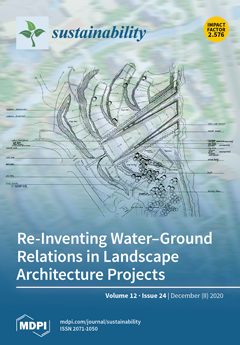Biochar is a way to improve the performance of the composting process and the quality of compost. This study was aimed to investigate the optimum ratio of khat straw (
Catha edulis) biochar and organic municipal solid waste mixtures to improve the
[...] Read more.
Biochar is a way to improve the performance of the composting process and the quality of compost. This study was aimed to investigate the optimum ratio of khat straw (
Catha edulis) biochar and organic municipal solid waste mixtures to improve the quality of the resulting co-composts. Khat-derived biochar during pyrolysis at 350 °C was added to organic municipal solid waste mix and four co-composting treatments were prepared with the compositions (%
w/
w): control compost (no biochar) and 5%, 15%, and 25% co-composted biochar in three replicates. The total organic carbon, organic matter, total nitrogen, available phosphorus, and potassium values ranged as 16.76–21.45%, 30.77–40.26%, 0.97–1.68%, 0.58–0.76%, and 12.72–15.29%, respectively. The results confirmed that 5% and 15% co-composted khat biochars had significantly reduced (
p < 0.05) organic matter loss and increased the contents of cation exchange capacity, pH, phosphorous, potassium, calcium, magnesium, and zinc compared to the control compost, while some heavy metals (Fe, Cu, and Mn) and EC values in co-composted biochars are lower than the control compost. Khat-derived biochar could be added to municipal organic waste mix at 5–15% (
w/
w) in order to get better quality of compost, which can be used as biofertilizer.
Full article





